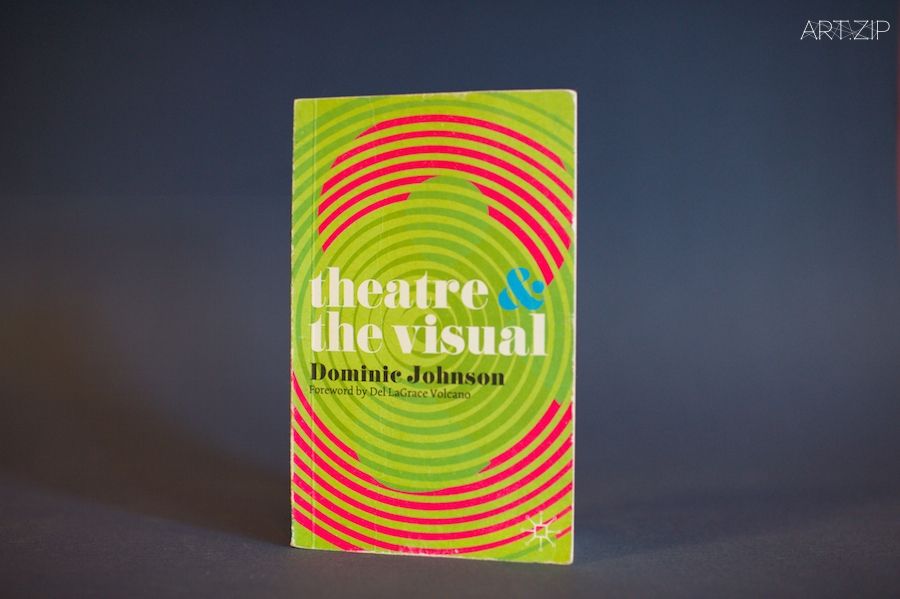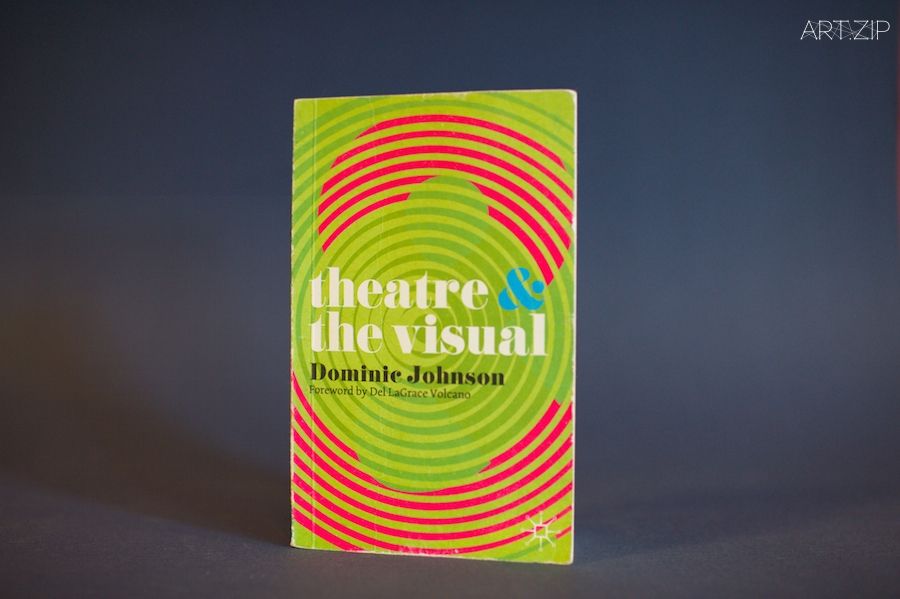
Text by: Li Bowen / 撰文:李博文
“By questioning the primacy of the text, in wordless, visual interruptions, the theatre draws on the legacies of the avant-garde attack on the senses. By bridging the visual and the textual in confrontational ways, theatre perhaps appears more readily as a mode of production that reflects the cultural, political, and intellectual preoccupations of the twenty-first century, even if the most challenging work seems to risk transforming the theatre into an atrocity exhibition.
As a form that explores the culture work performed by visual representation, theatre arts are not simply means of bringing texts to life. Instead, the theatre becomes a medium – or a set of related media – typified by the production of live images, often alongside other effects such as communal, social or reciprocal experience, choreographed movement, technological mediation, and the delivery of texts, music, and other sound scores.”
Theatre& Series is a series of publications on the relationship between the theatre and its others – museums, the body, sexuality, politics, just to name a few – edited by Jen Harvie and Dan Rebellato, published by Palgrave Macmillan. Theatre & the Visual (2012) by Dominic Johnson belongs to the ambitious series (“small books on theatre & everything else,” says the back cover); as a handy brochure, it renews the aged relationship between the theatre and the act of looking, attempting a reconsideration of the role of the audience/spectator, and a re-distancing between the viewing subject and the theatre, in a solid and enlightening way.
“通過在無言的、重視視覺的幹擾性表演中質疑文本的重要性,戲劇藝術繼承了先鋒藝術家們對感官進行攻擊的偉大遺產。通過讓視覺與文本相對峙,戲劇藝術成為了一種反映二十一世紀文化、政治以及智力偏見的文化生產模式,儘管那些最具有挑戰性的作品幾乎要把戲劇藝術轉變成一場殘忍行為的表演秀。”
“作為探索文化作品視覺再現的藝術形式,戲劇藝術不僅僅意味著為文本帶來生命。相反,戲劇藝術成為了一種媒介——或一系列相關聯的媒介——這種媒介生產現場圖像,並同時制造社群的、社會的或相互的經驗;編排運動;協調科技,並傳達文本、音樂以及其它聲音效果。”
《戲劇與…》系列叢書旨在討論戲劇與相關學科或理論的關係——包括美術館研究、人類身體研究、性別研究、政治研究等——這一系列叢書由簡·哈維(Jen Harvie)及丹·瑞貝拉托(Dan Rebellato)編輯,由著名的麥克米蘭出版社(Palgrave Macmillan)出版。由多米尼克·約翰遜(Dominic Johnson)撰寫的《戲劇與視覺(2012)》是這一雄心勃勃系列叢書(書的封底寫著:“關於戲劇以及其它一切的小書集” )其中的一本。作為一本方便的小冊子,這本書更新了戲劇與觀看行為的古老關係,嘗試重新思考觀眾身份的意義,以一種嚴謹、啟發式的方式重新思考觀者主體與戲劇藝術的距離。
Two neutralities are questioned in this book: the neutrality of vision, and the neutrality of the relationship between the verbal and the visual in theatre. Johnson argues that the human perception – specifically that of the eye in this case – is not neutral and static, but is in fact political and historical, subject to manipulations and developments that are more powerful than one might have thought. In Part One, Johnson links the modern idea of visuality to Italian Renaissance architect Filippo Brunelleschi’s invention of linear perspective around 1425, before explaining Leon Battista Alberti’s theory of perspective in On Painting (1435). Stressing the artificial nature of this invention of perspective in painting contributes to an understanding of the non-neutral nature of vision in theatre, and of the fact that social and technological development – such as the development of artificial light in theatre – changes perceptual experiences in theatre. “What it means to be an audience is different from one historical moment to another.” Also, the relationship between the verbal and the visual in theatre is in fact marked by power struggles – the verbal always having the upper hand and the visual marginalized until about a hundred years ago. This is evident in the English word for the one who goes to the theatre: “audience”, rooted in Latin audire meaning “to hear”.
This writing certainly goes along with the development of a specific kind of theatre that questions the authority of the text and the idea that the theatre is a literary form, by performing without or with only limited spoken words, and by embracing the condition of the society of the spectacle, in which the eye and what corresponds with it are championed. To Johnson, important theatre figures responsible for the early radical vitalization of the visual in theatre in the twentieth century include avant-garde Antonin Artaud, Jean Genet, Eugene Ionesco and Samuel Beckett among many others.
《戲劇與視覺》質疑了兩件被人們想當然地接受了的事情:“自然的”、不變的視覺,以及戲劇藝術中文本與視覺的“自然”關係。約翰遜認為人類感知——尤其是視覺——並不是自然的、不變的,而是政治性的、歷史性的,受各種力量控制,也有著悠久的發展歷史。在本書的第一部分,他追溯了視覺的歷史:意大利文藝復興時期建築家菲利波·布魯內萊斯基(Filippo Brunelleschi)於1425年前後提出了線性透視,其後,萊昂·巴蒂斯塔·阿爾貝蒂(Leon Battista Alberti)於1435年在《論繪畫(On Painting)》一書中再次發展了透視的理論。約翰遜強調了透視的人為性——無論在今天人們覺得透視的發生是一件多麽自然的事,這其實是人為創造的一種視覺現象。理清了這一點,我們就能夠更好地理解戲劇藝術中各視覺現象的非自然性以及政治性。事實上,許多社會科技發展對戲劇中的感官體驗都帶來了巨大的影響。比如,戲劇藝術中人工燈光技術的發展。“觀眾身份的意義因時代而改變。”另外,戲劇藝術中話語與視覺元素的關係事實上是某種權力爭鬥。直到大約一百年前,話語永遠是占上風的;戲劇中的視覺元素往往被忽視、邊緣化。這在我們描述戲劇體驗的詞語中也有體現:英語中觀眾一詞為“audience”,而此詞來自於拉丁語動詞“audire”——意為“去聽”。
《戲劇與視覺》一書的出現當然與某種特殊戲劇藝術的誕生有關。這種特殊的、年輕的戲劇藝術通過完全或部分去除對話/獨白,質問了文本的權威,挑戰了“戲劇是一種文學藝術”這個概念。我們甚至可以說,這種特殊的戲劇藝術擁抱了景觀社會的現狀,張揚地強調了視覺以及所見之物的重要性。約翰遜認為,在20世紀中,對於推動這個現實有著重要貢獻的戲劇藝術家包括先鋒戲劇理論家/實踐者安東尼·阿爾托(Antonin Artaud)、讓·熱內(Jean Genet)、尤金·尤內斯庫(Eugene Ionesco)、塞繆爾·貝克特(Samuel Beckett)等等。
Regarding the visual in the world of the theatre, Johnson cites the important work of performance artist Franko B – who “belongs to a long history of artists who have used the body in carefully staged (‘mediated’) events while departing from the traditional legacies of theatrical performance,” signifying also in context the intimacy between the visual and the body in the theatre – and speaks of the rarely discussed vision of the actors. The actors in traditional theatre, because of practical reasons (the blinding stage lighting) and conventions, do not have a vision. “In traditional theatre, the performer is therefore a peculiarly antisocial figure: the situations in which actors perform approximate reciprocal relations, yet they usually feign participation in a social contract; situations rarely arise in which a visual exchange can be achieved as a properly relational encounter.” To those who are interested in and are familiar with traditional theatre, it is nothing novel; but to Johnson the valorization of the actors’ vision and the encouragement of the reciprocity is an important aspect of the overall vitalization of the visual in theatre: almost magically, it grants the blind characters vision, contributes to the breakdown of the “fourth wall” and brings forth an “unique social relation” that is not to be found in traditional theatre nor in reality.
In the last section beautifully titled The Pleasures and Pains of Looking, for those who might find the visual in contemporary experimental theatre baffling and intolerable at times, Johnson points out that: “Performance and visual culture can train the eye, and revise the values we ordinarily ascribe to objects of vision. These acts of looking are necessarily difficult, even costly in a psychic sense, regardless of whether the effects they produce are pleasurable or painful.” And: “Where there is pleasure in an image, there is magic: the flash of inspiration that accompanies or confuses a set of work processes. Moreover, where there is magic, there is fetishism.” For a discussion of the act of looking in depth, Johnson in this chapter brings in the formidable theories of fetishism – that is, theories of objects and social relations – formulated by respectively Karl Marx and Sigmund Freud. Though apparently rather distant from the topic of the title, and the theories are not interpretive tools as Johnson admit, to Johnson, “…they suggest how the fetish – as a theory of the magic of the image – conditions the way we look at objects and bodies in the theatre.” The import of the theories is narrated with two examples: Niel Bartlett’s puppetry and Annie Sprinkle’s performance.
與觀眾的視覺同樣重要的,是舞臺上表演者的視覺。約翰遜提及了表演藝術家弗蘭科·B(Franko B)的代表性作品——對於作者來說,藝術家弗蘭克“從戲劇表演的傳統中出發,與一系列重要的藝術家一般,在嚴密地構建(調解)出來的事件中使用身體進行表演”——這些作品不僅在這個語境中強調了視覺與身體的親密聯系,也強調了表演者的視覺的重要性。出於技術原因(舞臺上刺目的燈光)以及慣常要求,傳統戲劇藝術中的演員並沒有真實的視覺。“在傳統戲劇藝術中,表演者是一個特殊的、反社會的人物:演員表演的環境近似相互關聯的環境,但他們經常假裝參與了社會契約;很少有讓表演者與別人真正四目相對的機會。”對於熟悉傳統戲劇藝術的觀眾來說,這不是什麽了不起的事情;然而對於約翰遜來說,鼓勵表演者去真實地觀看,鼓勵互相地註目,是思考戲劇藝術中視覺性的重要一環:如魔法一般,某種特殊的戲劇形式給予了舞臺上的角色以視覺,為“第四面墻”的倒塌做出了貢獻,並帶來一種獨特的社會關係,這種社會關係不存在於傳統戲劇之中,也不存在於現實之中。
在本書的最後一個章節《觀看的愉悅與痛苦》中,約翰遜指出:“表演與視覺文化能夠訓練眼睛,並重新評估我們慣常賦予視覺物件的價值。這些觀看行為必須是困難的,甚至是耗費精力的,無論這些觀看行為創造的效果是愉悅的還是痛苦的。”作者另外提到:“只要一個圖像之中包含愉悅,這圖像中就有魔法:即,伴隨或擾亂創作過程的靈光一現。並且,只要有魔法,就有拜物主義。”作者繼而在本章節中深入地討論了當代拜物主義(Fetishism)——關於外在事物以及社會關係的理論——的主要理論來源:卡爾·馬克思(Karl Marx)以及西格蒙德·弗洛伊德(Sigmund Freud)。儘管對於這些理論的深入探討與《戲劇與視覺》一書主題只有著間接的關係,並且約翰遜承認這些理論並沒不是解讀戲劇作品的工具,他指出:“這些理論指出了拜物——作為關於圖像的魔法的理論——決定了我們在劇場中觀看事物以及身體的方法。”,繼而,他通過兩個重要的例子闡述了這些理論的重要性:尼爾·巴雷特(Niel Barlett)的偶戲,以及安妮·斯普林柯(Annie Sprinkle)的表演藝術。
In Bartlett’s case, it is argued that the spectator’s desire oscillate between the objects (puppets) and the relations they represent (“the lives of two gay men in apartheid-era South Africa”). The puppet as fetish works on concealing and emphasizing the social relation. It is further argued that unlike in the capitalist society where the fetishism suppresses a social relation, in the theatre the active relationship between the object and its pleasurable effects can be “politically enabling.” On the other hand, former porn star and sex worker Annie Sprinkle, through performances involving close examination of her cervix or the theme of oral sex, “gestures to the ways in which even a pleasurable visual experience might hide traumatic narratives, and suggests that the theatre is a supple mode of addressing the abuses of the past.”
Regarding the pain in relation to the visual generated in the theatre, Ron Athey’s performance is cited as the work that has achieved the cultural project of “troubling the event of theatrical looking.” The AIDS survivor Athey’s performance, in brief, causes in the viewer pain and horror by rather straightforwardly inflicting pain upon himself. The performance is so extreme that Johnson goes as far as asserting “Athey cites and exceeds the iconography of Christian martyrdom.” In turn, the audience is “asked to identify with the physical and psychic weight of his experience, as a body under attack,” “remember more robustly the pains of others, and recalls that the inevitabilities of social interaction include pleasure as well as pain.”
The provocative, honest foreword by Del LaGrace Volcano is very interesting. Perhaps, one might say, even more interesting than the main body of the title. But the foreword and the main text by Johnson really work very well together, one being autobiographical, sensational, and speaks directly of the condition of the society of the spectacle, though rather dramatic and theatrical in itself; the other academic, informative and reflective. The title manages to offer a clear picture of the development of the visual in the theatre. John suggests for further reading titles by Maaike Bleeker, Mark Franko, Catherine Soussloff, Shannon Jackson, Amelia Jones among others. The contemporary practitioners championed in the book, including Franko B, Annie Sprinkle, Ron Athey, Neil Bartlett, are all very interesting and are worth looking into – for any prepared spectator.
以巴雷特的作品為例,約翰遜指出,觀者的欲望在物件(木偶)以及這些物件代表的社會關係(“兩個同性戀男人在南非種族隔離時期的生活”)之間搖擺。作為拜物物件的木偶同時隱藏了並強調了某個特定的社會關係。約翰遜借此說明,儘管拜物主義在資本主義社會中起著壓迫社會關係的作用,在劇場中,一個物件與其造成的愉悅感覺之間的關係可以是“解放式的”。前色情電影明星/性工作者安妮·斯普林柯則通過展露子宮頸、或以口交為主題進行表演。對於約翰遜來說,這樣的作品“指向了愉悅視覺經驗可能會隱藏傷痛性敘事的方法,並指出了戲劇藝術是討論痛苦過去的合適方式。”
在討論戲劇藝術中圖像帶來的痛苦時,約翰遜提及了羅恩·阿塞(Ron Athey)的作品。他認為阿塞的作品完成了一個成就,“擾亂了戲劇式觀看的事件。”艾滋病患者阿塞通過直接在自己的身體上造成傷害,為觀者帶來痛苦和恐懼。他的表演是如此的極端,以至於約翰遜給出了宏大的結論:“阿塞引用並超越了基督教殉難主義。”觀者則被“要求認同一個受攻擊的身體經驗的物理及心理重量,”“以更積極的方式銘記他人的痛苦,並銘記社會互動同時包括著愉悅和痛苦。”
著名跨性別攝影師拉·格蕾絲·沃凱諾(Del LaGrace Volcano)為本書所作的前言聳動而真誠,非常值得一讀。甚至,有的讀者可能會認為這前言比《戲劇與視覺》的主體內容更加有趣。然而,事實上,本書的前言與主體內容以美妙的方式互相補充:前言是自述式的,充滿感情,並直接討論景觀社會的現實狀況,儘管可能有些過於戲劇化;由約翰遜完成的主體內容學術性十足,富有知識性。本書清晰地描繪了戲劇藝術中視覺方面的發展。約翰遜建議感興趣的讀者對麥克·佈雷克爾(Maaike Bleeker)、馬克·弗蘭科(Mark Franko)、凱瑟琳·索斯勞弗(Catherine Soussloff)、商農·傑克遜(Shannon Jackson)、阿米莉亞·瓊斯(Amelia Jones)等學者的著作進行深入閱讀。而書中提及的戲劇藝術實踐者——弗蘭克·B、安妮·斯普林柯、羅恩·阿塞、尼爾·巴雷特等人——均非常有趣,值得戲劇愛好者在做好了心理準備之後深入地去了解。


